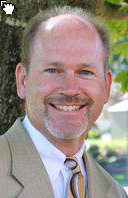Heartbreak Hill
By Tracy Jessup
Gardner Webb

“If I go forward, he is not there; or backward, I cannot perceive him; on the left he hides, and I cannot behold him; I turn to the right, but I cannot see him. But he knows the way that I take; when he has tested me, I shall come out like gold.” (Job 23:8-10)
Heartbreak Hill is the name given to a stretch of the Boston Marathon course where races have been won and lost. It comes about 20 miles into the race from Hopkinton to Boston when runners are challenged with forcing their already fatigued legs and bodies up the half-mile slope. Heartbreak Hill is an iconic landmark in the sport of marathoning and an article for Boston.com, Dialynn Dwyer recounts how Heartbreak Hill got its name.
“For more than 80 years, the hill has been known by a name that reflects what runners may face on its pitch. It stems from a particular moment of heartbreak for a marathoner pushing for the lead in 1936. On that Monday, runner Ellison ‘Tarzan’ Brown from Rhode Island set a ‘blistering pace,’ The Boston Globe reported. The newspaper’s sports reporter Jerry Nason wrote that Brown set ‘every course record for the 23 of the 26-plus miles crashing to oblivion.’ Brown’s pace ‘literally caused him to race himself as well as the remainder of the field dizzy’…He was more than three minutes above the record pace – until the ‘mocking hills’ in Newton. It was there, on the last of the hills, that Johnny Kelley of Arlington, who won the marathon the previous year, ‘wiped out a half-mile deficit’ to catch Brown.
Kelley patted Brown on the shoulder as he went to pass the race leader. And in response, Brown surged ahead, going on to win the marathon in 2:33:40, becoming the second Native American to win the Boston race. ‘Nason referred to the incident as breaking Johnny’s heart,’ Fleming said. ‘So that really was thought to be the way that the term Heartbreak Hill became coined.’ Kelley came in fifth and had to be ‘carted away’ from the finish line. He was ‘worn, battered to bits,’ by the chase over the hills…” (“How Heartbreak Hill Got Its Name,” 4/3/19).
In today’s passage, Job confronts one of the most difficult questions of Christian theology. How do we explain all the suffering that occurs in a world created and sustained by a loving and gracious God? Job’s friend Eliphaz gives an answer that is partially correct when he says the answer lies in human sinfulness. Still, all of us are aware of numerous instances in which no human sinfulness lies behind our suffering. Job finds himself amid such a dilemma and honestly, gives expression to his inability to see, feel, or hear God.
Heartbreak Hill. All of us have been there. So, what do we do? James Newsome writes, “Job points to a dilemma whose solution he “cannot see” (v. 9b), but one for which Christian men and women find resolution in Jesus Christ (although Christians would also confess very imperfect knowledge in the matter). In Jesus Christ, God joined humankind in its suffering, both deserved and undeserved. The cross of Jesus Christ is that point in time and space where, more than any other, God identified with human suffering and experienced it to its fullest extent. Thus Job performs the enormous service of raising questions which he cannot answer and of pointing beyond himself to One who can” (Texts for Preaching, p. 544).
Prayer: Lord, thank you that even in the midst of our heartbreak, you know the way that we take and whisper your grace and peace into our lives.
________________________________________
Dr. Tracy Jessup serves as vice president for Christian Life and Service and senior minister to the University. He is a graduate of Gardner-Webb with a B.A. in Music and earned his M. Div. degree at Samford University’s Beeson Divinity School. He completed his Ph.D. at the University of Nebraska-Lincoln. He also teaches in the undergraduate department of religious studies and enjoys the opportunity to serve the local church through interim pastorates, pulpit supply, and preaching revival services. he and his wife, Teresa, have two children, Christian and Anna.
Read more Good Christian News from Dr. Jessup HERE.
________________________________________







